Note: I didn’t lead three lives, but I did go to the Soviet Union more than 25 times!
From 1981 – 2000, I was part of group of students, teachers and researchers who participated in reciprocal trips to the former Soviet Union as part of the Global Thinking Project (GTP). During this period I traveled to Russia more than 25 times. In 1989 I met Dr. Anatoly Zaklebyney, a professor of biology and ecology and a member of the Russian Academy of Education in Moscow. The GTP in Russia was organized by the Russian Academy of Education, and it was through that connection that Anatoly and I met and became close friends. He was one of the most respected ecology and environmental educators in Russia, and had been involved in the development of environmental education teaching materials, as well as in directing environmental science teacher education seminars in the summer in Siberia. It was Anatoly who introduced me to Vladimir Ivanovich Vernadsky, whose ideas influenced the GTP, and our own understanding of the biosphere, geology, and life on the Earth. I watched the Bill Nye debate Ken Ham, and wondered how Vernadsky would affect the argument. ————————————————————————————————————————————————————————–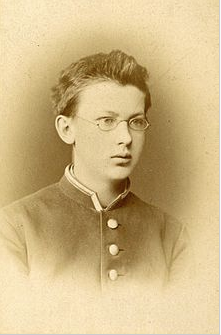
Figure 1. Vladimir Ivanovich Vernadsky as a high school student in St. Petersburg, Russia, 1878 (Wikipedia)
One of the most profound books published in the last century, was written by Vladimir Ivanovich Vernadsky. Vernadsky’s ideas didn’t make their way into the west for many years. His original book was in Russian, and a French translation was published in 1929. And it wasn’t until nearly at the end of the 20th Century that his ideas were translated into English.
Interestingly, Vernadsky’s ideas were slowly coming into vogue in Russia at the same time that Gorbachev’s use of the concept perestro?ka (restructuring) took hold in the Soviet Union. Our work in the Soviet Union was propelled by the emergence of perestro?ka, and it aided in our work in Russian schools and in the Russian research institutes that supported us. An atmosphere of change was clear in our meetings with our Russian colleagues.
Vernadsky’s book is entitled The Biosphere (public library, 1927), which is composed of two lectures by the author that describe his conception of the biosphere, and it is the view that is accepted today by science (Jacques Grinevald, from the Introduction of the Biosphere).
Recently, Bill Nye, the Science Guy debated Ken Ham, the Answers in Genesis Guy. Nye represented Bill Nye the Science Guy, a science education and educational television program. Ham represented the Answers in Genesis, a young Earth creationism organization. They debated the question,
How we did get here?
For Bill Nye, the answer lies in the evidence that is all around us, and is explained by the theory of evolution proposed by Charles Darwin and Alfred Russell Wallace in the 19th century. For Ken Ham the answer lies in Genesis, which in Ham’s belief, is the word of God. For Nye, the record in layers of rocks, ice cores, tree rings, and fossils provides evidence that the earth is very old, and that life is explained by Darwin and Wallace’s theory of natural selection. For Ham, the Earth is young (young Earth creationism) and that the first chapters in Genesis should be taken as literally true and historically accurate. Ham disputes Nye’s assertion of the fossil record and a very old Earth because we were not there to see.
In the Biosphere, Vernadsky answered the question this way:
Life is the creation of the sun as a result of terrestrial processes.
Long before Bill Nye and Ken Ham walked on the surface of the Earth, Vladimir Vernadsky developed the idea of biosphere, which merged biology and geology from his scientific work in biogeochemical studies. To Vernadsky, the biosphere is a global dynamic system that been transforming the “face of the earth” for eons. Vernadsky’s biosphere was a space or region where cosmic energy is transformed. The existence of the biosphere means that Earth systems function in a cosmic environment, powered by the sun. Vernadsky proposed the biosphere as a holistic idea, which was the opposite of the mechanistic reductionist nature of mainstream science. I’ll come back to this later, and relate these two ideas (holistic vs mechanistic) to the “Nye-Ham Where did we come from Debate.”
Holism was not a word that was received well in the scientific community. However, scientists who came after Vernadsky, namely Lynn Margulis, James Lovelock, and Fritjof Capra and many others, validated the work of Vernadsky, indeed, in many ways, their ideas were somewhat based on Vernadsky notion of holism.
Vernadsky’s aim was to get us out of our compartments and instead have us consider relationships between life and chemical/geological phenomena of earth. To Vernadsky, the biosphere is a system of relationships involving cosmic energy from the sun, and its use in the transformation of that region of the planet Earth he referred to as the biosphere.
Lynn Margulis, and other scientists wrote the introduction to the English language version of the Biosphere, and had this to say about Vernadsky.
Vernadsky teaches us that life, including human life, using visible light energy from our star the Sun, has transformed our planet over the eons. He illuminates the difference between an inanimate, mineralogical view of Earth’s history, and an endlessly dynamic picture of Earth as the domain and product of life, to a degree not yet well understood. No prospect of life’s cessation looms on any horizon. What Charles Darwin did for all life through time, Vernadsky did for all life through space. Just as we are all connected in time through evolution to common ancestors, so we are all-through the atmosphere, lithosphere, hydrosphere, and these days even the ionosphere-connected in space. We are tied through Vernadskian space to Darwinian time. Vladimir I. Vernadsky. The Biosphere: Complete Annotated Edition (Kindle Locations 91-92). Kindle Edition.
It’s important to understand that Vernadsky considered empirical facts from a point of view of holism that combines all parts of the planet in an indivisible whole. As such, Vernadsky explored ideas such as the geological effects of life.
Vernadsky, if he were in the audience the night that Nye and Ham debated, would have added much to the conversation with these statements. He would have said that the following ideas are illusory, harmful, and even dangerous when applied to contemporary science:
- Geological phenomena are accidental coincidences of causes, essentially blind, and obscure because of their complexity and number.
- The assumption of the existence of a beginning of life at a particular time in the past is simply a logical necessity based on mechanistic thinking.
- Philosophical and cosmic ideas that cannot be founded on facts should be discarded, and replacement sought. Vladimir I. Vernadsky. The Biosphere: Complete Annotated Edition (Kindle Locations 330-332). Kindle Edition.
Bill Nye provided facts and observations to support his ideas; Ken Ham provided little in the way of facts by using the word of God as written in Genesis. Nye provided credible evidence for life throughout time, while Ham believed life extended back only 6,000 years. Nye was not sure when life began, or how. Ham believed life began 6,000 years ago, and was the work of God.
Vernadsky would have pointed both of them to the idea of biosphere, and that life is a natural part of the Earth system. Vernadsky based his ideas on a series of principles that are based on known facts:
- There is no evidence for the direct creation of a living organism from inert matter.
- Throughout all of geological time, no geological periods have been observed devoid of life.
- All living matter today is connected genetically to living matter from all previous geological epochs.
- The earth’s terrestrial environment has always favored the existence of living matter under conditions as they are today.
- Throughout all of geological time, the way in which living matter affects the surrounding environment has not changed much.
- The global mass of living matter has remained about the same throughout geological time.
- The energy given off by living matter is mainly solar radiation. Living matter is an intermediary in regulating the chemistry of the Earth’s crust by solar energy. Vladimir I. Vernadsky. The Biosphere: Complete Annotated Edition (Kindle Locations 327-330). Kindle Edition.
If these statements were part of the Great Debate, it would be very interesting to find out how Nye and Ham would react to them, and what they might propose to either support or refute these facts.
Bill Nye, Ken Ham, and Vladimir Ivanovich Vernadsky represent different ways of thinking about the world. Using Russell Ackoff’s “thinking,” we can name two world views here, a machine age world view and a systems age world view.
Machine Age Thinking
Machine age thinking is the belief that the universe is a machine and operated in a kind of clock wise way. Russell Ackoff, however, puts the machine age in context in this way:
I believe we are leaving an age that can be called the Machine Age. In the Machine Age the universe was believed to be a machine that was created by God to do His work. Man, as part of that machine, was expected to serve God’s purposes, to do His will. This belief was combined with another even more ancient in origin, man had been created in the image of God. This meant that man believed himself to be more like God than anything else on Earth. This belief is reflected in the way God was depicted in the art of the age: in the image of man. In a sense, men were taken to be “demigods.” Russell L. Ackoff. Ackoff’s Best: His Classic Writings on Management (Kindle Locations 96-100). Kindle Edition.
The Machine Age is characterized by analysis, reductionism and determinism.
Machine age thinking is based on the idea that the way to understand something is to take it apart conceptually or physically. By taking it apart, one can then try to understand the parts separately, and then trying to assemble this knowledge into an understanding of the whole. It was the basic method of inquiry initiated by the Renaissance, and it is called analysis.
Bill Nye is a science educator whose thinking has been greatly influenced by the prevailing nature of science which is based on the collection and analysis of data. His understanding of the history of the earth has been shaped by his studies of geology, paleontology, physics and chemistry. His examples tended to be compartmentalized citing fossils in one instance, radiometric dating, analysis of climate based on ice cores, and tree rings.
Ken Ham is a young-Earth creationist whose understanding of science is determined by his religious belief that the first part of Genesis is an acute description of the history of the universe, and that the world is 6,000 years old. Ham is a determinist who accepts a cause-effect concept and that everything in the universe is the effect of some cause. Ham traces all causes back to a “first cause,” and an explanation of the creation of the universe. Ackoff explains this kind of thinking in this way:
Now, if everything in the universe is caused, then each cause is itself the effect of a previous cause. If we start tracing back through the chain of causes do we come to a beginning of the process? The answer to this question was also dictated by the belief in the complete understandability of the universe. It was yes. Therefore, a first cause was postulated and taken to be God. This line of reasoning was called the “cosmological proof of the existence of God.” It is significant that this proof derived from the commitment to the cause-effect relationship and the belief in the complete understandability of the universe. Because God was conceptualized as the first cause, He was taken to be the creator. Russell L. Ackoff. Ackoff’s Best: His Classic Writings on Management (Kindle Locations 154-158). Kindle Edition.
Although Bill Nye and Ken Ham might have been seen as representing very different world views on the origins of life on the Earth, their thinking was, in Ackoff’s conception, machine age.
What about Vladimir Ivanovich Vernadsky? How would Ackoff characterize his thinking?
Systems Age Thinking
Ackoff would claim that Vernadsky was a visionary. Systems age thinking brings into question the awareness that machine age thinking does not lend itself to solving very complicated problems. In fact, Ackoff provides many examples of research, especially during and right after World War II that required the interactions of people in different disciplines. Interdisciplinary fields emerged including computer science, cybernetics, policy sciences, and decision sciences.
Long before Ackoff’s thinking appeared, Vladimir Vernadsky had invented a number of interdisciplinary fields including biogeochemistry, geochemistry and radiogeology.
Systems Age thinking is characterized by interdisciplinary activities, relationships, and synthesis. If Vernadsky were on the stage with Nye and Ham, he would take them to task for ignoring the relationships that exist in the world, and that life should be considered in the context of the biosphere. He would have taken them on a journey and one of his projected slides would have been this one:
A system, therefore, is a whole that cannot be divided into independent parts. From this, two of its most important properties derive: every part of a system has properties that it loses when separated from the system, and every system has some properties-its essential ones-that none of its parts do. Russell L. Ackoff. Ackoff’s Best: His Classic Writings on Management (Kindle Locations 233-235). Kindle Edition.
He would tell Nye and Ham to think differently about the nature of life. He would suggest that they consider the biosphere as the domain of life, and that is a biogeochemical evolving system with cosmic connections, principally the sun.
He would ask Nye and Ham to get out their boxes, and think about what holistic mechanism combines all parts of the planet in an indivisible whole (Vladimir I. Vernadsky. The Biosphere: Complete Annotated Edition (Kindle Locations 327-330). Kindle Edition).


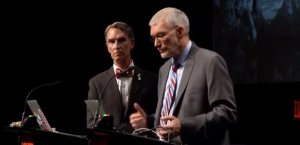
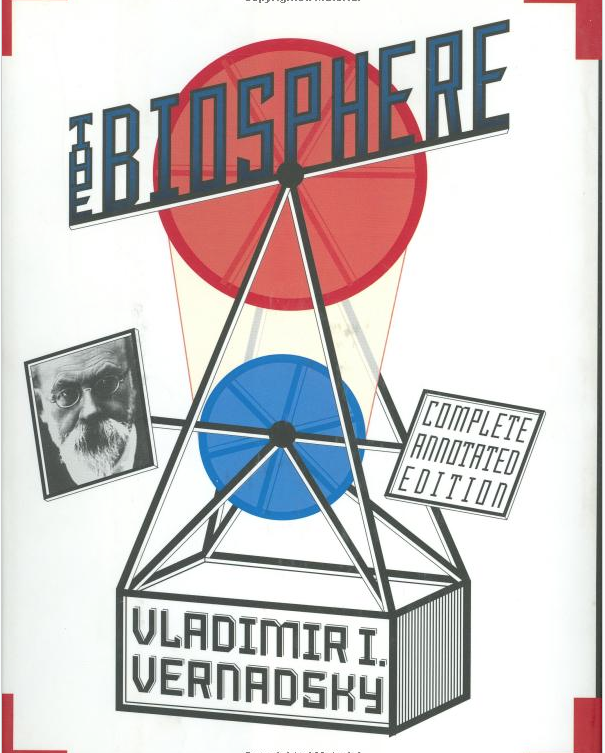
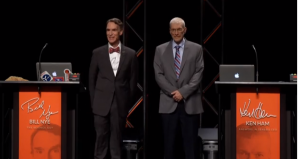
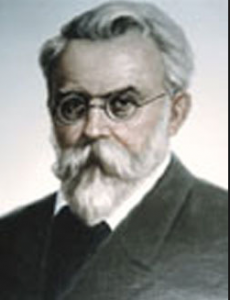



0 Comments